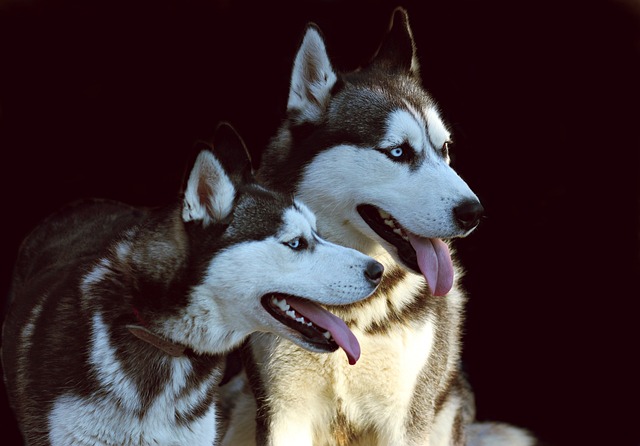
How can I tell if my dog's heatstroke is serious
Let’s be real: It’s a sticky August morning in Los Angeles, and you took your 2-year-old Golden Retriever, Max, for a walk a little later than usual
Husky puppies are little balls of energy, with their fluffy coats and boundless curiosity—qualities that make them a favorite in many homes. But their rapid growth and active nature mean choosing the right dog food isn’t just about filling their bowls; it’s about fueling their development. New owners often wonder where to start, and the answer lies in understanding their unique needs.
First, protein is non-negotiable. Huskies, descendants of hardworking sled dogs, thrive on high-quality animal protein—think chicken, salmon, or lamb—as the first ingredient. This supports muscle growth, especially during their first 12 months when they’re doubling in size. Avoid foods with vague “meat by-products” listed early; look for specific sources. A good rule of thumb: if you wouldn’t eat the protein source yourself, your puppy probably shouldn’t either.
Fat is another key player, but the right kind matters. Healthy fats like omega-3s from fish oil help keep their thick coats shiny and support brain development. You’ll notice a difference in their energy levels too—huskies need that extra oomph for zoomies in the backyard or playtime at the dog park. Just be mindful of portions; overfeeding can lead to obesity, which is tough on their joints as they grow.
 Carbohydrates should come from whole grains or veggies, not fillers. Brown rice, sweet potatoes, or peas provide steady energy without upsetting their stomachs. Many husky puppies have sensitive digestion, so avoiding corn, wheat, or soy can prevent loose stools—a common issue that’s no fun for anyone, especially in apartment settings where clean-up is immediate. Speaking of which, always have waste bags handy during walks to stay compliant with local laws.
Carbohydrates should come from whole grains or veggies, not fillers. Brown rice, sweet potatoes, or peas provide steady energy without upsetting their stomachs. Many husky puppies have sensitive digestion, so avoiding corn, wheat, or soy can prevent loose stools—a common issue that’s no fun for anyone, especially in apartment settings where clean-up is immediate. Speaking of which, always have waste bags handy during walks to stay compliant with local laws.
Age-specific formulas are a must. Puppy food is calibrated to meet their higher calorie and nutrient needs, with smaller kibble sizes that are easier for their tiny jaws to chew. Switching to adult food too early can leave gaps in their nutrition, affecting everything from bone strength to coat health. If you’re unsure, ask your vet—most recommend staying on puppy food until 12–18 months, depending on their growth rate.
Natural ingredients and minimal additives are better for long-term health. Look for foods with no artificial colors, flavors, or preservatives. These can cause allergies or hyperactivity, making training harder. Positive reinforcement works best with huskies, and a calm, well-nourished puppy is more likely to respond to commands than one bouncing off the walls from unnecessary additives.
Finally, consistency is key. Sudden food changes can upset their tummies, so transition over 7–10 days by mixing old and new food gradually. Observe their stool, energy, and coat—these are telltale signs if the food is working. And remember, fresh water should always be available, especially after play sessions. By choosing wisely, you’re not just feeding your husky puppy—you’re setting them up for a healthy, happy life as your adventure buddy.

Let’s be real: It’s a sticky August morning in Los Angeles, and you took your 2-year-old Golden Retriever, Max, for a walk a little later than usual

You're enjoying a summer afternoon at the park when you notice your dog has stopped panting and appears disoriented - their gums are bright red

Let’s paint the picture: You’re in your Denver apartment, watching your 4-year-old Boston Terrier, Ruby, plop down mid-play session with her favorite toy

Many dog owners notice their pets nails seem shorter after regular walks,but how much does this daily activity actually help?The answer depends on where you walk—concrete sidewalks or asphalt streets gently file nails as a dog's paws hit the ground

Most dog owners notice their pup scooting across the carpet at some point, but few connect it to impacted anal glands. These small sacs near a dog’s rectum secrete a scent for marking territory

Most vets agree that regular dog teeth cleaning is key to avoiding painful dental issues later. For healthy adult dogs, a professional cleaning at the vet’s office every 12 to 18 months usually works well.